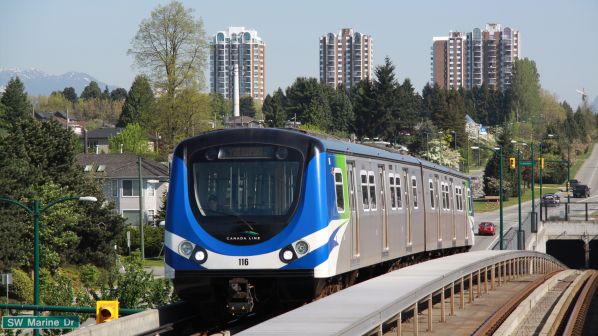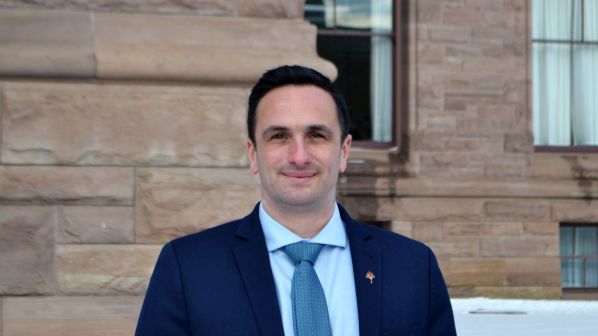WITH more Canadians ditching their cars and young people waiting longer to get a driver’s licence, demand for urban transport across the country’s major and medium-sized cities is growing.
Expanding urban populations and this changing mind-set contributed to a 2.9% increase in overall public transport ridership in Canadian cities in 2018. However, this is increasing pressure on existing networks - in particular Toronto Transit Commission (TTC) and Montréal Transport (STM) metros - to cope with demand.
“The public is demanding to get to where they need to go quickly, cheaply and reliably, and our systems are working every day to meet that commitment as quickly as they’re able to,” says Mr Marco D’Angelo, president & CEO of the Canadian Urban Transit Association (Cuta). “They want increased access to work and education and improved quality of life, and increasingly they’re turning to transit as a viable solution. That’s in conjunction with more people walking and cycling.”
Operators are rising to this challenge by increasing capacity and extending their networks - 27 light rail and metro projects are currently at the proposed, planning or construction stages across Canada, according to IRJ Pro.
Many of these projects received a major boost in 2017 with the allocation of funds from the federal government’s $C 120bn ($US 91.4bn) Investing in Canada Infrastructure Plan (ICIP), which was launched with great fanfare by the Trudeau administration in 2016 and is set to continue under the current minority government.
The initial round of funding included $C 1.09bn for the second phase expansion of Ottawa’s O-Train, $C 1.28bn for Montreal’s new REM automated light metro project, along with $C 640m for the $C 1.6bn Expo Line Fraser highway extension and $C 1.12bn for the $2.8bn Millennium Broadway extension as part of the Greater Vancouver Transportation Authority’s (Translink) Skytrain expansion.
“It’s putting demand on the tradesmen, on engineering and major consulting companies to deliver so many higher-order transit projects in multiple communities during the same time period.”
Marco D’Angelo, president and CEO of the Canadian Urban Transit Association
These schemes joined an already extensive light rail construction programme. Among the highlights of 2019 was the opening of Ottawa’s second light rail line on September 14. Known as the Confederation Line, the 12.5km Line 1 runs from Tunney’s Pasture east to Blair with an end-to-end journey time of around 24 minutes. Construction on the $C 2.1bn ($US 1.6bn) scheme, described as Ottawa’s largest-ever public works project, began in 2013 and was carried out by Rideau Transit Group with partners ACS Infrastructure Canada, Ellis-Don and SNC-Lavalin.

Light rail also arrived in the cities of Waterloo and Kitchener, Ontario, on June 21 with the inauguration of Stage 1 of the Ion network, which comprises a 16km 19-station light rail line from Conestoga Mall in Waterloo City to Fairview Park Mall in neighbouring Kitchener, together with a 17km Bus Rapid Transit line from Fairview Park to Ainslie Street in Cambridge.
However, with unprecedented levels of construction inevitably comes challenges.
“It’s putting demand on the tradesmen, on engineering and major consulting companies to deliver so many higher-order transit projects in multiple communities during the same time period,” D’Angelo says.
As well as each other, legacy and new rail projects are competing with water and power infrastructure upgrades, intensifying the stress on the construction industry to manage these projects to time and budget. As a result, D’Angelo says the way projects are structured, costed and paid for could change.
“I think in the future there is going to be a move away from fixed-price projects,” he says. “There’s a series of other metrics that could be used to determine the value of a project - anything from timeliness to innovation to advancing a new technology. What we’re hearing from the private sector is that the risks associated with fixed-price contracts need to be revisited and the risk assignment needs to be rebalanced as new projects come online because of capacity and the need to follow project timelines.”
Many of the schemes that have already received support are “mega projects.” This includes an agreement in October between the Ontario government and the City of Toronto to spend $C 28.5bn until 2031 on the expansion of the city’s transit network, including extending the Yonge - University Line and the Eglinton Crosstown Light Rail Transit project, along with the Hurontario LRT project in Mississauga and Brampton, which is in the planning stages.
Cuta is now looking to build support for medium-sized projects around the country which could be brought forward with federal funding. Public transport authorities are also helping efforts to identify schemes that should be prioritised by harnessing crowdsourced information and GPS data to better understand travel behaviours. This information is informing travel demand management studies used by decision makers to identify which bus networks and rail expansion projects should be prioritised.
Ride sharing
Three years ago, ride-sharing apps such as Uber and Lyft were still an unknown quantity. However, as these services have matured, operators are beginning to see the benefits of working with these providers to boost public transport use and reduce personal car ownership.
“The dynamics are changing a little bit,” D’Angelo says. “We’ve seen many agencies form partnerships with Transportation Network Companies (TNC) in order to make their services more available to a wider audience. It’s been helpful for some systems in terms of leveraging new technology and providing a range of mobility choices for their customers.”
“Canadian systems are looking to enter the on-demand transit arena by creating more dynamic routing and more flexible services in areas that have lower population density but where there is still demand for a public transit option.”
Marco D’Angelo
Canadian operators are also working alongside operators in the United States to develop such relationships. Cuta is facilitating these meetings, recently hosting Denver’s Regional Transportation District (RTD) at a recent board meeting to hear how it is developing a joint ticketing platform with Uber.
Canadian urban transport operators are also looking at other ways to connect passengers to their networks and solve the last mile challenge in areas where it is not feasible to construct a light rail line or launch a standard bus route.
“Canadian systems are looking to enter the on-demand transit arena by creating more dynamic routing and more flexible services in areas that have lower population density but where there is still demand for a public transit option,” D’Angelo says.
These on-demand micro-transit services harness platforms developed by Pantonium or the Via and Moovel transit apps. One success story is York Region Transit’s Ride On-Demand (ROD) service, which uses a range of vehicle types that users can book from their homes to a requested stop within the service area.
Modernisation
Canada experienced a similar boom of urban transport development in the 1970s and 1980s. But with the fleets operating on these networks now coming to the end of their usable life, demand is growing for new rolling stock.
In Toronto, this includes the replacement of 40-year-old Canadian Light Rail Vehicles (CLRVs) with 204 Bombardier Flexity Outlook LRVs. However, the new vehicles have faced delays and suffered from reliability issues - the contract called for the LRVs to travel 35,000km before experiencing a major failure that delays service for five minutes or longer but by January 2019 the vehicles were experiencing problems after an average of just 7577km in service.
Montreal is also replacing its first-generation rubber-tyre metro trains, while Vancouver’s Skytrain is engaging in a similar process. The Canadian market is therefore one to watch closely in 2020.

